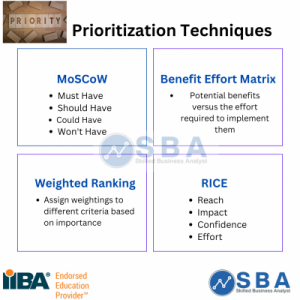
Prioritization is key for features and requirements! From MoSCoW to RICE, there are various techniques to help prioritize requirements and features. Whether it’s categorizing requirements by priority, understanding customer needs, or assigning weights, the goal is to ensure that the most critical items are developed first. In this post we briefly discuss the 4 common prioritization techniques:
- MoSCoW: MoSCoW is a prioritization technique that stands for Must Have, Should Have, Could Have, and Won’t Have. It involves categorizing project requirements or features into these four categories based on their importance.
- Weighted ranking: Weighted ranking is a prioritization technique that assigns numerical values or weights to different criteria or factors. Each criterion is evaluated and given a score based on its importance or impact. These scores are then used to rank the items or options being prioritized.
- RICE: RICE is a prioritization framework that stands for Reach, Impact, Confidence, and Effort. It is commonly used in product management to determine which initiatives or features should be prioritized. Reach represents the potential audience or user base, impact measures the expected benefit or outcome, confidence indicates the certainty or confidence level in achieving the desired result, and effort represents the resources or work required.
- Benefit effort matrix: The benefit effort matrix is a prioritization technique that helps teams evaluate and prioritize tasks, projects, or features based on their potential benefits and the effort required to implement them. It involves creating a matrix with the x-axis representing the effort required and the y-axis representing the potential benefits. Items are then plotted on the matrix, allowing teams to focus on high-benefit, low-effort tasks or projects for prioritization.
If you are looking to learn more about these prioritisation techniques, contact The Skilled Business Analyst today! We will help take your Business Analysis career to the next level!
Yours in Analysis
Tendai
Business Analysis Instructor

